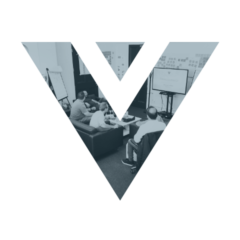The power of empathy in sharing research
How many times have you been at a meeting where your research has been circulated beforehand and as time goes on, it dawns on you that no-one has really processed your work?
It’s frustrating, yes, but by no means a reflection on you, or even your intended target readers, but more on how you approached the task.
Today, I suggest an different route to ensure your messages sink in and actually resonate with your audience.
I do this through the power of empathy in sharing research to ensure your content is read. You can apply this to UX content strategy, mobile and web content design, copywriting and presenting, enabling you to make the impact you want.
A Microsoft consumer study done in 2016 claimed that the human attention span today is 8 seconds, down from 12 seconds in the year 2000.
The goldfish, incidentally, has an attention span of 9 seconds.
Not really reassuring.
So in a nutshell, you’ve got to make those eight seconds count.
The designer’s mantra of user-centred design optimises products for how users want to use them, rather than forcing a user to change their behaviour to use a product.
I believe the same principle can be applied to ensuring your thoughts, reports or work in general gets noticed by the people who matter, by tailoring your material to the format that person lives and breathes.
A wise person knows their audience. A wiser person knows that even though you have worked weeks to produce a in-depth comprehensive report that outlines your client’s market competitors, if you present them with a daunting 40 page document, they are not going to read it all.
And even if they are, you are relying on them to digest it as you want them to and not just skim. You are tempting fate and risking some of your hard work being lost.
“When creating content, be empathetic above all else.
Try to live the lives of your audience.”
Rand Fishkin, Founder at Moz
During a recent client’s fund raise, we must have tailored 20 different slide-decks, one pagers, 2 pagers, white papers, info-graphics, teasers, even an explainer video to potential investors and partners all over the globe, with different approaches for different people based on our knowledge of the people we were pitching to and previous interactions with us and the team.

Tailoring your content to individual consumers, whether it be document, visual or video
Tailor fitting your content to the reader, while time consuming, is perhaps the most effective way of ensuring your work is noticed. This is empathy, this is showing respect to the person in question, respect for their time and actively builds rapport. But, from a business point of view, it ensures your pitch hits the nail on the head.
Just keep in mind these three main points:
Structure — Make reading this document consistent. Don’t strain their attention or focus with lots of random pages or treatments.
Underscore the topic — Give them a hold to lock their attention to
Brief descriptions — Keep it brief and to the point, and finally…
Only communicate what is relevant to the person.

Keep your documents structured with key info first, followed by a more in-depth look
If you can, take the time to ask them what they want from you in terms of communication. It’s one question that they will respect you for asking and will make your job infinitely easier.
And while we’re talking clarity of message… Don’t assume because you understand the technical jargon being thrown around that your clients or colleagues do too. A lot of the modern acronyms and tech concepts being bandied about by the tech community are lost on the general public and there is a lot of pressure to be informed on all the different things going on in the digital space. Never assume that because you know it, they know it.

Support your research by creating visuals and assets to share high level information
Help others get there. Help them understand.
Info-graphics, explainer videos, posters, these are so effective to keep a decent high level knowledge throughout a team and are a great way to support our clients who may be struggling to convey these concepts to non techie investors, stakeholders and even their own families.
We can all relate to this. It’s still one of my favourite games, asking my parents to define what I do and every time, the definition gets ever more fantastic, which is lovely for me! There is a lot of information in the world so we should never assume we are all singing from the same hymn sheet.
Gauge your client like a user: Are they more visual, are they more fact driven, do they enjoy a deep dive or are they more analytical and prefer to see the charts and figures as opposed to write-ups?
Ask them for copies of reports, e-mails that they’ve actually enjoyed and are more likely to respond to. Ask them to define what they need in a report before you write it and you’ll find that your job is going to be much easier when you need to deliver it.
And that’s not to say you’re not thorough in your research and you cut content to the point of madness. Section your document relevant to the reader, while including a link to the entire document. Structure this well, with easy to find, digestible sections — but always assume that this will not be read in full.
Steve Krug, as ever, nails it perfectly, when describing web-users:
“They don’t read, they scan.”
Steve Krug
Trust in the time spent getting to know your clients, colleagues and end user. Knowing their drivers, knowing what they respond to and why they do what they do is never a bad investment of time. The power of your relationships will always pay dividends in the workplace.
This also lets you find the freedom to be your authentic self at work. This will inevitably help you to do your job better, as you will be acting on instinct, asking honest questions and diving deeper to get a better understanding because you will be emotionally committed to doing right by the person, not just getting the task done.
The benefits of this approach?
Simple:
1. You’ll get your point across faster
2. Get buy in faster
3. Move processes along faster
4. Strengthen your relationship with the client/target reader
The target readers will appreciate the efforts to deliver to their remit and this massively increases trust in you and your work. This is why clients will stay with you.
Empathy is the ability to understand and share in the internal states of others and it’s an invaluable tool, not only your UX arsenal but your toolkit generally for life. Every interaction you have benefits from you rocking this skill because this can be the catalyst to incredible products and possibilities.
So to sum up:
Don’t lock yourself into one format — Adapt your approach.
Tailor-fit content to the person — Don’t overwhelm with a one size fits all.
Ask your audience how they want to digest information — Always have at least one reference.
And remember, 8 seconds… you’re dealing with the equivalent attention span of inattentive goldfish most of the time…
Make it impactful!



